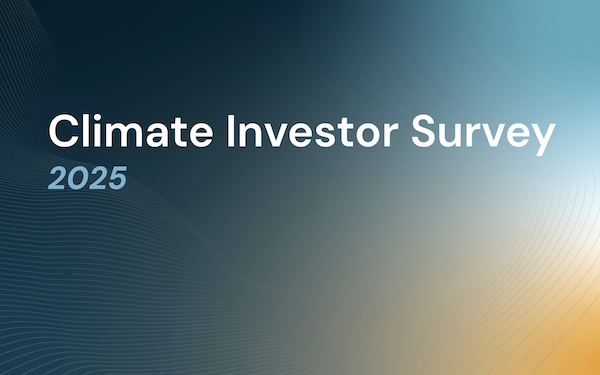
2025 Climate Investor Survey
September 23, 2025
—
Wireframe

Enveda Biosciences
September 4, 2025
—
Fierce Biotech

Our 2024 Impact Report
September 17, 2024
—
Wireframe

LevelTen Energy
July 16, 2024
—
MSN

Xcimer Energy
June 4, 2024
—
Axios

Mammoth Bio
April 25, 2024
—
Regeneron

CNBC
March 25, 2024
—
CNBC








